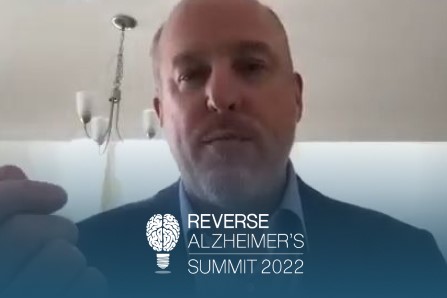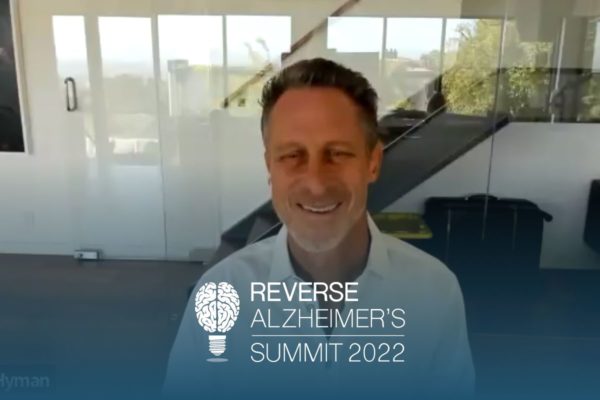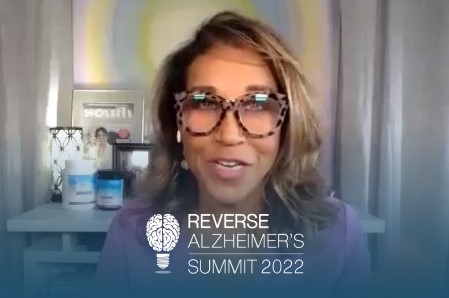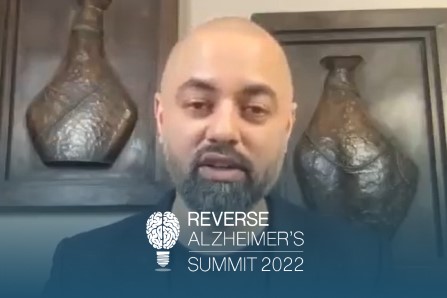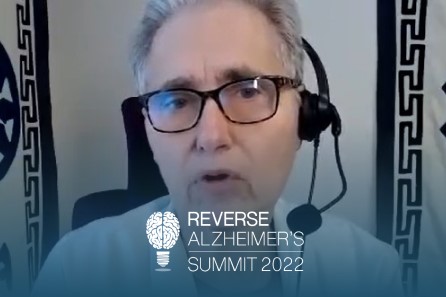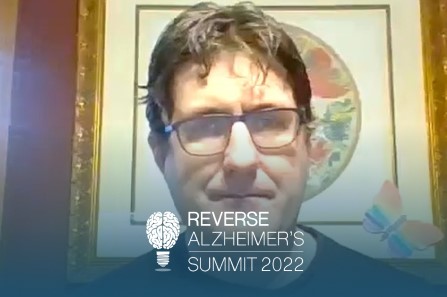Join the discussion below

Dr. Heather Sandison is the founder of Solcere Health Clinic and Marama, the first residential care facility for the elderly of its kind. At Solcere, Dr. Sandison and her team of doctors and health coaches focus primarily on supporting patients looking to optimize cognitive function, prevent mental decline, and reverse... Read More
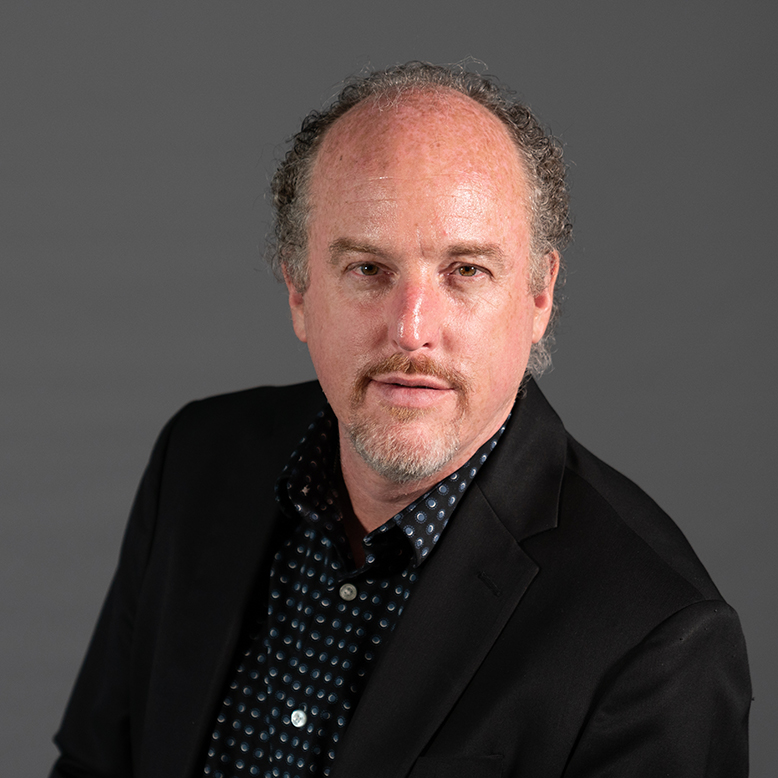
Christopher Shade, PhD, founder and CEO of Quicksilver Scientific, continues to be the driving force of development and innovation. Dr. Shade’s vast depth and breadth of knowledge, passion for healing, and intuitive understanding of chemistry and biology are reflected in Quicksilver Scientific’s well-designed detoxification protocols, unique supplement delivery systems, and... Read More
- Low risk, high reward heavy metal detox.
- Understanding the detox process from cells to excretion.
- Cellular and mitochondrial regeneration for optimal brain health.
Heather Sandison, N.D.
Welcome to this episode of the Reverse Alzheimer’s Summit. I’m so excited to introduce you to Dr. Chris Shade. He’s the founder and CEO of Quicksilver Scientific. He specializes in the biological, environmental, and analytical chemistry of mercury, other heavy metals and even environmental toxins. You can see why I’ve had him here today. You know, from my work and from the rest of the summit, that I believe that toxins are one of the primary causes of neurodegenerative disease, including dementias. And so I am so pleased to have Chris here to describe the ins and outs, the details and the logistics of understanding to what degree this might be contributing to you or your loved one’s dementia and what we can do about it, Chris welcome.
Christopher Shade, PhD
Thank you Heather, I’m really happy to be here. I love this subject.
Heather Sandison, N.D.
So you’ve dedicated your life. Your life’s work is really helping people understand chemical metal toxicity, mold toxicity as well, and what we can do about it. So let’s start with how you got started with mercury.
Christopher Shade, PhD
Well, let’s start. I was born in Bethlehem, birthplace of Jesus and me. No, different place, Bethlehem, Pennsylvania. So I was born in a steel town. ‘Cause, you know, everybody has a sort of origin story that goes back to their own struggle, whether they know they were going down that path or not. But, you know, I was born in this town where there was a metal rain coming down every day. And then I had a very generous dentist. Every time I would go in there, I would leave with silver fillings. You know, I thought he was giving me money, you know? And when I got all 17 of them taken out, I realized, or my dentist realized, I only had one, maybe two cavities. You know, at the time, anytime you had a crack, they would dig it out a little bit, crack in your enamel, they would dig it out and seal it with mercury. And so I had this massive onslaught of mercury coming into me, I was super smart, young, and then in the teenage years as I filled up with mercury, I kind of got distracted and, you know, I was given to bouts of anger and, you know, I just wasn’t quite myself. And, you know, I look back and I look back to everything that went on in me, and, you know, I really was building up a big load to mercury, and, you know, for a mix of genetic and other, you know, environmental reasons, I was kinda susceptible to it. So fast forward through, I leave school, I was doing environmental chemistry and then I leave school ’cause I’m like, this is kinda stupid, all you do is, you know, chase after Monsanto and pretend they’re not polluting anything. And then I became an organic farmer.
And after, when I was an organic farmer, I joked that I went outta business the year Whole Foods came around, I was a little precocious in organic farming. And I did a couple of things, then I went back to school, looking at pollution around farming, and did that for a master’s and went for a PhD. And I was gonna look more around farming and pollution, I was out in Illinois looking at the University of Illinois for my PhD and then I met this guy who was smarter than all the other guys looking at pollution chemistry and he was doing the global biogeochemistry of mercury. He had a global model of all the inputs and outputs and all the transformations that mercury makes. And he said, “Hey, can you design an analytical system, so I can get all my own data?” I’m like, “Sure.” And so I ran down this path of designing and patenting a specialized testing for mercury that separates different forms. So in people it’s so you can separate the form of mercury in fish from the form that comes from the dental amalgam. Now, the form that comes from the dental amalgam is called inorganic mercury, the one from fish is called methyl mercury. Inorganic mercury in your body is from amalgam, but it’s also from the breakdown product of the fish. And they excrete differently, one’s going out through the urine, one’s grow out through the stool and the hair. They kinda partition into the body differently. And I did this and I wanted to get out of environmental, I wanna get into clinical work and work on people. You know, I was an organic farmer before. I was trying to change health by bringing a better food supply there.
And then I sorta went up the intellectual ladder and I was working, you know, around toxins. And so I spun off and started this company and started looking at mercury in people. And when I got over into integrative and functional medicine and what they were doing, this is in the late 2000s, kinda like 2007 or so, I started, dabbled in that and I realized they had no idea what they were talking about with mercury. It was just this, like, you’re this black box and all mercury goes into you and you can never measure it unless you do a challenge test with a chelator and you could never get it out unless you throw chelators in there. And I’m like, I tried that path and it got me really sick, really quick. And then I’m like, there’s no way this is how it works. You know, they don’t know anything about testing, they probably don’t know anything about detox. And so I started, you know, introducing this new kinda testing that doesn’t use challenge tests, it’s just look at it as it is. And then I had to introduce a new way of detox, and started down that path with a specific binder that worked really well and then I’m like, “Oh, let’s go through the GI, not the kidneys.” And then I had to work out how to push from the cells out and bring in things like liposomal glutathione and/or of two upregulators.
So, you know, I came in and really upset the apple cart a lot in terms of how they do testing, how they do detox, made a lot of enemies just by having something new and, you know, then take it, you know, we’re like 14 years from when I started into that. And now, you know, we’re all pretty much working from this new paradigm of upregulating different processes. And maybe we’re not just going after mercury, we’re gonna bring mercury mold, some other metals, some environmental toxins all at the same time. And then even further than that, we’re gonna be working on regenerating mitochondria and while removing old dead mitochondria, this deeper layer of not just take the toxin out, take the damaged parts out and rebuild them with new ones. And the more we’ve gone on, the more we see these aspects of aging that are inflammatory aspects, these death of the mitochondria, senescent cells, propagating waves, fields of inflammation in your body are all related together. And the toxin can initiate that death and removal of them and maintenance of your detox system and your inner regeneration system are two sides of the same coin. And so we can clear and regenerate within the same paradigm.
Heather Sandison, N.D.
It’s so exciting that it’s so, you know, being in the dementia space, I didn’t want to be chelating people, especially women are affected by dementia and my dementia patients are postmenopausal. And so I worry about bone health, I worry about the risks of throwing off electrolytes and the risk, of course, of putting pressure as you alluded to on the kidneys. And so, in I guess, I was trained around the time that you started Quicksilver and I was trained that you chelate, you use DMPC or DMSA, and then you collect urine after And that’s how, you know, what the total body burden of mercury is. And then fast forward, six, eight years later, I had patients coming to me saying, why would I do that? Haven’t you heard of Quicksilver, I have these tests that are great and I’m using his products and my mercury is coming down. So then a couple years later, I couldn’t even get DMPs by IV. And then now I had colleagues saying, “Well, just use the Quicksilver stuff, it works just as well, it costs a fraction of as much and it’s so much like simpler for the patient. They don’t have to come in and get IVs, they can do all of this from the comfort of their home for a very small fraction of the price.
And you don’t have the risks on the kidneys and stones.” And so I did it and sure enough, they were absolutely right. Patients have so much more access now because anybody who’s an hour away or has to work or has childcare all those things that can’t come into the clinic to do an IV, now they can get rid of their mercury from home. So I can just speak directly from experience clinically around this and then in our clinical trial, we use your tests, your mercury try tests and heavy metal tests to see where everybody was at baseline and then again, after treatment in our six month clinical trial on patients with cognitive decline. And this was, I think, instrumental to understanding the full basically toxic burden of these patients, of these participants and many, many, many of them, the vast majority of them. Of course, so when we’re talking about elderly people, they have a lifetime to accumulate these toxins and so sure enough, we were able to see that. Now I also learned a lot from you taking Dr. Bredesen’s ReCODE course. So tell me about your relationship with Dr. Bredesen and how you guys have worked together to help patients with dementia.
Christopher Shade, PhD
Yeah, you know, I first started working in, when I was starting in detox, you know, first it was just sort of a lot of Lyme, chronic Lyme and just acute mercury toxicity people and a lot of chronic ones, people have been working for a long, long time. And so those were the first ones you were dealing with. And then we went into autism. And so here, we’re trying to clear out a brain and we have these inflammatory processes in the way, so we learned a lot there. And then a couple years later, this guy comes to me and he wants to get on a call and he’s with Dale Bredesen. And so we’re talking about his case and he was the CEO from the Southern California region and he was eating tons of fish and he was having early cognitive decline, he was only 56. He had incidentally and this all comes together a little bit later, he had metabolic diseases. And so he had insulin resistance, high blood sugar, fatty liver and he had anxiety and racing mind and so he was having all those things and he went through Bredesen’s original whole supplementation protocol, and it didn’t move the needle at all. And somebody suggested, hey, this might be mercury, do this Quicksilver test, you know, go to this doctor up the road and do that. So he sent it in and sure enough, super high methyl mercury levels, super high inorganic mercury levels, poor detoxification.
And so Bredesen was on and he is like, all right, I want to get these numbers down. I’m gonna hand him over to you, we did all this stuff, you know, you take him and, you know, give him this whole detox regimen and then I’ll pick it up from there. And so it was about five to seven month program, but it was pretty intensive. It was the basis of this new deluxe detox cube that we made. And sure enough, we brought the mercury levels way down, both the methyl and the inorganic and oh, low and behold, the metabolic disease was gone too. And the early cognitive decline was down too. And, you know, handed him back and Bredesen’s like, “Oh my God!” And that was like the big light bulb for when he saw environmental toxins are a major, major thing. This is not just all biological decay and a need for these certain supplements that, you know, prop that up. If you don’t get the trash out, you’re just, you know, in the wind so to speak with all the other stuff, but if you do get the trash out, then the other stuff really takes you all the way there. And so that was the one that really started all this detox into the cognitive decline world.
Heather Sandison, N.D.
So let’s talk a little bit more about mercury ’cause, of course, that’s where you started, but also mercury is extremely neuro toxic, so can you describe like, why is it that we’re worried about this?
Christopher Shade, PhD
Yeah, and so you’ll see when we talk, you know, it’s hard for me to deconvolve a lot of things. So, you know, I talked about the early mercury and then autism, so what’s the defining feature of autism is neuroinflammation. And, you know, that’s why they got the ticks and they look so irritated all the time. In neuroinflammation, you have a hyperactivity of the glutamate receptors. Now drawn into it is the activation of the microglia, these immune cells in the brain that are usually for synaptic pruning, all of a sudden get recruited into acting like peripheral immune cells and releasing pro-inflammatory cytokines. And they get in this little war with the neurons where one’s releasing pro-inflammatory cytokines, it’s damaging the neurons, they’re releasing these other things that damage the microglia and it just keeps going. It’s like getting a team from CNN in with Fox News in a room, you know, like you think they’ll ever stop, no, it just keeps going. So you gotta break the whole pattern. And so that was a big use of CBD to calm down neuroinflammation. So why does that, you know, why does that correlate to mercury? So mercury is a glutamate receptor toxin. It’s an excitotoxin. And so it hyperactivates the glutamate receptors, so they’re over firing. So what does an over firing glutamate receptor do? It makes you hyper glutamate dominant, which makes you sympathetic dominant. And what kind of symptoms does it give you? Gives you anxiety, anxiety and racing mind and then when you wear out then depression, so the cycles of anxiety and depression and the racing mind and all that, and that’s keeping you then in sympathetic dominance and sympathetic dominance is locking off your liver pathways.
And when we talk about detox, we’ll see how parasympathetic rest, digest, repair, regenerate detoxify is the opening and sympathetic fight or flight is the closing. So now we’re closing off this stuff off into our body and, you know, mercury it’s, you know, shown directly to create neurofibrillary tangles, it’s shown to, you know, just destroy the axon of the nerve, you know, there’s so much obvious damage. You know, Boyd Hailey, when he worked on that, he showed metals all have an ability to disrupt various biological enzymes. And he had all these assays for all the enzymes and he found mercury was the one enzyme, the one metal that could block the activity of every single enzyme he had an assay for, you know, it was really powerful. And when you look at it in sulfur chemistry, you know, it goes, and it disables thioredoxin reductase, it disables glutathione reductase or glutathione peroxidase, sorry, and these are seleno enzymes. It goes and it displaces iron from iron sulfur proteins. So then not only do the iron sulfur proteins not work, the free iron is participating in Fenton reactions. It has a 10 billion fold higher affinity for binding sites in zinc proteins. And so it kicks out zinc and disables those proteins. So it has all of this ability to disrupt all that. And then on an energetic level, because anxiety and fatigue are your two most common symptoms on a biological level in the energy generation, mercury, cadmium, arsenic are disproportionately damaging to the mitochondria is the whole system around antioxidants in the mitochondria is tuned towards being able to defend against respiratory bursts with reactive oxygen species and tuned away from resistance to mercury, cadmium, arsenic, so they damaged that system. And then on a thyroid level, they block T4 to T3 conversion. And then on an adrenal level, they just burn out by having you in sympathetic, they burn out the adrenal. So they have all these ways of lowering energy and damaging the brain so kind of have to pay attention.
Heather Sandison, N.D.
Yes, definitely wanna pay attention. And I think that it’s really helpful for people to understand the why because so many dentists are like, “Oh no, you don’t need to get those amalgams out or don’t worry about the fish unless you’re pregnant.” And for people with aging brains, this is critical that we understand that level of mercury. Now you mentioned cadmium, arsenic, I also wanna talk about lead. So take us through, you know, how those affect the brain and you mentioned the mitochondria, how those affect the system and then, again, like what to do about it.
Christopher Shade, PhD
Yeah, so all, you have four major heavy metals, you know, mercury, cadmium, arsenic and lead. Then you’ve got a couple secondaries that get into the brain, manganese when it’s really high, antimony when it’s really high also gets in there and then copper when it’s out of balance with zinc starts being a toxin too. But if you take the big four, they all affect the brain in a similar way, lead’s a little different. Mercury, cadmium and arsenic go together ’cause they’re very self hydro-reactive, a little more so than lead. And they’re also self hydro-reactive for getting ’em out of the body. So the glutathione system together with metallothionein and the thioredoxin system are all pulling stuff out and within the cell buffering. So this is an important little side note, when you upregulate the glutathione system, yeah, you are dragging things out, but at a cellular level, you’re creating resistance to the metal. So even if you never even get rid of the metals, your cells can deal with them being around. So that system is always protecting and pushing the metals out of the cell. You know, if you’re in a cell here, you have that upregulated, you’re pushing away, pushing away, pushing away and these are the two parts of detox you push out of the cell into circulation and then you drain from circulation with liver to GI to stool and through the kidneys and also some through the skin that we don’t know the mechanism as much. So when we upregulate the glutathione system, we have an enhanced protective mechanism and it’s that same system that the metals are attacking. So you’re waiting to see who gets on top. And once the metals get on top, you start losing.
And so you always want to support that system, so that the cells and the brain cells, all the cells can be pushing away, but when you do support that system, you’re also supporting export from the body. Now you do have to bring in a little bit of liver support, you have to make sure bile flow is moving ’cause the toxins move on bile transporters in the green river of the bile from the liver to the GI and if that’s blocked, you can’t get anything out. And before we go back, how does that get blocked? Well, there’s feedback. It gets blocked from inflammation and we’ll talk about inflammation being the fundamental opposite to detoxification. Inflammation blocks it, but just being in sympathetic dominance blocks it. And on the hormone level, being in estrogen dominance blocks it. This becomes a huge thing for the postmenopausal women and perimenopausal women, they’re all in a bit of an estrogen dominance and estrogen makes glutamate receptors hyper fire and it blocks bile flow. So it’s taking that access and blocks it, whereas the opposite is progesterone. Progesterone makes GABA activity, which makes you more parasympathetic and it’s bitter and it activates bile flow and further in the hormone world for Nrf2 to be up and constantly upregulating, detoxification, glutathione system activity, it needs a co factor or so it’s called a nuclear transcription factor And there’s another one that goes with it called the PXR or pregnane x receptor that responds to pregnenolone and progesterone. So as the hormones go down, I mean, I said in the beginning, you know, I had these chronic mercury toxicity people, the Lyme people and I had the menopausal women all like, God, these amalgams are no problem and now I have all the mercury symptoms, why is that? ‘Cause the hormones are declining. And so all this stuff sort of winds together into this whole package.
Heather Sandison, N.D.
I’m so glad you’re pulling these pieces together, right? Because we know that dementia is a complex breakdown of the neurological system, right? And so there’s a stress component, there is a toxic component, there’s a nutrient component, there’s a hormonal component and we know that we need to put all these things back together and what you’re describing is a lot of that complex interaction and why it’s so essential and also why the pharmaceutical companies can’t come up with something that’s gonna really help us, right? Because they don’t appreciate the complexity of all these-
Christopher Shade, PhD
The one hit wonders, you know? And you can’t hit all these paths and with the one hit wonder.
Heather Sandison, N.D.
No, we need a solution that matches the complexity of the problem. And so I so appreciate you speaking to that. Now with glutathione, I think the other thing that was really important that you brought to light here is why some people don’t tolerate glutathione. So your products, what I’ve seen over and over again is I have to like be the person that pulls the reigns back and like slows everyone down because your products work really, really well, which means sometimes people are getting toxins out faster than they can tolerate it, so they’re pushing more than they’re catching and eliminating. So talk us through how people can avoid that, how they can, you know, what do you do? I usually start low, go slow, but tell me what advice you give to people and to providers.
Christopher Shade, PhD
Yeah, so if you look at the whole relay ray sound, the cell, you have glutathione processes going on in there and pushing the toxins out into circulation. And in fact, if you give a lot of glutathione and a lot of Nrf2 upregulation like lipoic acid or sulforaphane, but you’re not doing the next phases, you’ll see the blood levels go up. And that’s the tissues going into the blood. The tissues always have a lot more than the blood. So you have compartments, you have the tissue compartment, the blood compartment and then the drainage compartment, which is the liver and the kidneys out into stool and urine. So you’re thrown into the blood, you’re bringing that up, you need liver to upregulate, pull those out and dump them into the bile, which means you need high bile flow and for high bile flow, you’re going to use like traditional bitters. Now we have this push catch detox system. We have the liver sauce, which pushes the toxins to the blood and upregulates bile flow and it’s got within it this bile mixture called BitterX, it’s a traditional bitters. This is why bitters were like the cure all at the turn of the 1900s because, you know, opened up people’s bile flow that just to so much, its digestion, is detox, you know, it’s cycling of everything, it’s balancing everything. So you have to couple the movement there into the blood with the movement through the bile, so you need to upregulate bile flow. You might use triticale, taurodeoxycholate, you’d even use manual methods to push things down. Hormones, progesterone is wonderful for that.
So it’s either bitter compounds or bile salts or hormones to get that flow going. Then you got another problem once you get down there, reabsorption that means you need a binder to catch all that stuff down there. And the binders you’re looking at charcoal, zeolites, chlorella was an old school one, and chlorella was great for metals because it had these self hydro groups on it, like glutathione like groups, but even more powerful. And so, we made this product, this was how we got into this, this was the number one product, it was called IMD. And it was these silica particles was self hydro groups on them, tons of self hydros, you know, it was like one little tiny 100 milligram teaspoon of this was equivalent to 70 or maybe it was 90 chlorella. I mean, it was like so many. And so you need those so that when the metals come out of the bile, they stick to something that you can’t reabsorb. Then if it’s mold toxins, you’re looking at charcoal is really good, zeolite and clays are good for some of those, Kitazin is a natural, that’s a molecular mimic of Welchol, Welchol and tyramine or what you use from pharmaceuticals. So you need some cocktail of binders picking up everything. In the beginning, all we used was this metal binder.
Now we mix the metal binder with the everything binders, so we can get everything there. So you gotta push from the blood and then you gotta match that with the movement through the liver and into the GI. And there’s slightly different genes. They’re both called MRPs, but the one that dumps from the cell to the blood and the one that dumps from the liver to the bile may have different snips on them. And so if the liver to bile snip is a little slow or if you’ve got inflammation, fatty liver, endotoxemia in the liver, it’s gonna move a little slow. And so if the cell is faster than the liver, the blood levels go up, if the liver’s faster than the cell, the blood levels go down, but you’re gonna feel that symptomatically, if you’re getting, you know, wound up a little bit of brain fog and, you know, fatigue, anxiety, you know, any symptomatic stuff means that the blood compartment is going up faster than it’s being drained. So that means you have to lay heavily on the bitters and the binding side. So slow down like the lipoic acid, the sulforaphane, those are the things that push from there, slow down the glutathione. That’s all supporting the cell levels and turn up drainage. Oh, another one for bile drainage I forgot that say, this is a really essential one, especially from for Alzheimer’s and any neurological stuff is phosphatidylcholine.
Heather Sandison, N.D.
Thank you, yes, I’m so glad to hear you say that. And now for bile flow, I think of that more orally, so oral PC, and then for kind of cellular like rebirth, I think of IV phosphatidylcholine. But tell me, tell me more about how you guys use it and where you put it into the mix.
Christopher Shade, PhD
No, I mean, they’ll all, the reason PC is in there, why it’s important for the bile flow, one of the transporters out of the cell on the canalicular or bile drained side, you’ve got a couple, you’ve got the MRP II, which moves bile salts and toxins. You’ve got BSEP, bile salt export pump moves bile alone, and then MDR moves phosphatidylcholine. And the phosphatidylcholine is thinning out the bile, so you don’t get sludgy bile and jam up the system. And bile is a very detergent thing. It’s there to be a detergent on your fats, right? So it’s also blending with the bile and to mixed micelles, So it doesn’t dissolve the endothelia of the bile tract. And it’s being donated from the hepatocytes all the time from the membranes into hepatocytes. So when you run out of either choline or phosphatidylcholine, you’re gonna lock up the bile flow and hold the toxins in, so you need to get it in and it’s coming in from the blood. So IV will go there too, if you look back to Lepus Dee, do you remember Lepus Dee in Ascension?
Heather Sandison, N.D.
No.
Christopher Shade, PhD
Those were used heavily. Klinghardt, used a lot of those. Those really wild integrative guys in the ’90s and 2000s. The PK protocol was based on that. Well, it wasn’t just phosphatidylcholine and incidentally that was made by, it’ll come back to me, it’s a division of lipoid in Germany that does all their injectables and it was injectable phosphatidylcholine that’s where we get our PC same injectables division.
Heather Sandison, N.D.
The ASEAN.
Christopher Shade, PhD
What’s that?
Heather Sandison, N.D.
The ASEAN?
Christopher Shade, PhD
Yeah, yes, the ASEAN was not just phosphatidylcholine, it was phosphatidylcholine and sodium taurocholate, it was a bile salt. Bile salts stimulate bile flow and they stimulate activation of AMPK. AMPK moves, it increases canalicular trafficking, which is moving across the canaliculus, but it also increases lipolysis, so burning off of fat solubles. So the PC injectable used to, I mean, people would say, “Oh my God, I did a PC IV, I had to stop on the way home, you know, and I pooped green.” So the injectable is going through the liver and increasing bile flow anyways that you get it in there. So we use these small liposomes to micelle size phosphatidylcholine, either pure PC or there’s a blend that’s PC and ahiflower, which is a Omega-3 with astaxanthin and carotenoids, which are your best fat soluble antioxidants. So bringing in some source of PC, now that’s an oral, but it’s, you know, it’s in these little liposome micelles. Capsules of PC in the enterocytes, you actually have to break them into fatty acids and choline bring them in and then rebuild them. So it is a, you know, a great source of precursors and it all does eventually go in, it just doesn’t peak up in the blood. And when you peak in the blood, just like with the injectables, you stimulate that bile flow, the low end slow is more building slowly all the membranes, the mitochondria, you know, more choline, phosphatidylcholine and the brain. Whereas the rapid ones are actually stimulating more on the bile flow side. But they’re also, the rapid ones also get across the blood brain barrier more.
Heather Sandison, N.D.
Every time I talk to you, I end up swallowing handfuls of supplements right afterwards because I’m inspired to get all of these processes going. So let’s segue into environmental toxins. So these are the types of like Bi-petrochemicals, parabens, PCBs, you mentioned organic farming and so pesticides, herbicides, especially glyphosate. Tell us what you’ve learned over the years about testing, both testing for them and then getting them out.
Christopher Shade, PhD
Yeah, so as we sort of, our first detox stuff is more mercury specific, you know, the glutathione in there and then the binders specifically for heavy metals, but it still had this broad thing. Whenever you do Nrf2 upregulation and for definition, Nrf2 is a nuclear transcription factor. It’s a protein that’s outside the nucleus and it’s held in place by a protein called Keap1. And when homedic stressors strike it, it’s a stress response thing, free radicals, electrophiles, which is a fancy name for environmental toxins, they strike that and they strike actually Keap1 and they release Nrf2 to go into the nucleus and it upregulates transcription of all the chemo protective genes. These are genes for antioxidant activity like glutathione and superoxide dismutase with their corresponding enzymes, glutathione peroxide, scorable peroxide and the reductase is that keep them cycling, you know, crunching free radicals and coming back in like glutathione reductase, fixing protein damage with glutaredoxin, then thioredoxin and activating detox with the glutathione transferase and the transporters, UDP glutathione transferase, sulfotransferase, all this whole family. And any of these toxins, they’re gonna have to go through some mixture of phase one, phase two, phase three, the transport out, phase two is the conjugation, phase one is this activation, certain compounds need it, certain compounds don’t, but they’re all upregulated when you Nrf2 upregulation.
And so doing this, instead of just going in with like DPMS does one thing really only is go for the metals and make you pee ’em out, push ’em into the kidneys, possibly damage the kidneys. Joe Mercola has a whole story about this. Blew out his creatinine clearance doing all that DPMS. You know, for years, he’s just crawling back and getting that regenerated, you know, 30 years later. So when you do an Nrf2 upregulation, you get a lot more. And then as we went, we got deeper within Nrf2 upregulation, we got deeper into AMPK. AMPK is what we get when we do fasting, keto diets, carb restriction, which makes us turn up like, well, it makes us reach for more energy and that’s mobilizing glycogen for more glucose, increasing glucose transporters, decreasing insulin resistance, increasing sensitivity and mobilizing fat to make ketones. And when you mobilize fat, you’re mobilizing other toxins and more, you know, I don’t know what’s most important, but very importantly, activating autophagy. So you go in and you take damaged mitochondria and you break them down and you turn them into fats and amino acids, you reuse those. And then the flip side later we’ll talk about is regenerating them through mitochondrial biogenesis, but this, you know, bringing both of these AMPK and Nrf2 together and why? Well, not just because one’s getting environmental toxins and one’s taking bad parts and turning up fat soluble momentum, but when AMPK is high, Nrf2 is easier to rise to the surface, it upregulates more and the two of those are clearing all this junk outta your system.
And so the more we brought all that together and then increase the breadth of our binders and coupled together, Nrf2, AMPK and bile flow, once you get all that going at the same time, you have a much more efficient way to get out and you’re pulling all the different environmental toxins at once and you don’t have to be more like laser shooting. I’m gonna hit the metals, now I’m gonna hit the mold, now I’m gonna hit the petrochemicals, you’re bringing all of them down. And so you can go out, you can do testing, like ENVIROtox testing at Great Plains Lab. You’ll see a number of different petrochemicals in there, petrochemical derivatives, mold testing, bit of a crapshoot, a lot of people just look for the markers that the mold is in there, but even if you don’t test, you’re pulling all of these things out. I mean, it’s nice to know and be able to cut off the sources, but of the, you know, let’s just say there’s 10,000 toxins out there. Let’s just say there’s a thousand because ten is overwhelming and it’s very, sounds like the 10,000 year old egg, how many can you test for, you know, 30, 40, you know, it’s like, you’re always gonna miss something. So, you know, if you have the money, test for as much as possible, so you can remove yourself from different exposures, but there’s the super toxins out there and the more holistic your detox is, the more you’re gonna drain all these things out.
Heather Sandison, N.D.
Right, and then once you’ve drained them out, they’ve done some damage. Like you had mentioned Joe Mercola and what was going on there. And so when we can measure, this is also nice ’cause we can kind of see when we’re quote unquote done. But as you mentioned, we live in a toxic suit, so we wanna have some maintenance phase detox support going forever and we can do this through diet and sweating and keeping our guts moving and through all of breath work, there’s lots of different ways to naturally enhance detoxification without even having to take a single pill, but then probably because of the world we live in, we wanna use a little extra support and we wanna shift focus when we get to a certain stage towards regeneration and healing the damage that was caused by the toxins. So tell us about how you guys do that at Quicksilver.
Christopher Shade, PhD
Yeah, so what, you know, to speak a little bit to the long term and to the regeneration. Long term, you know, if you’re incorporating bitters and you’re encouraging bile flow all the time and touring is another thing for bile flow, encouraging that bile flow is always gonna help that and PC encourages bile flow and is a constant regeneration. I mean, one of the things that Ed Kane, one of the original PC therapy, you know, Patty came for the PK protocol, but, you know, the real mind there was Ed Kane and, you know, he would talk about how phosphatidylcholine, you know, makes cell cultures live almost indefinitely, if you are always replacing the phospholipids. And so that’s a long term therapy that you can do along with bitters. Now back to the regeneration, phosphatidylcholine is gonna limit, it’s gonna be doing bile flow. A lot of the damage along the way is to membrane, so it’s gonna be constantly repairing membranes. And if you, you know, have some of these high end membrane bound antioxidants like endothione, astaxanthin, the different, you know, Lutein and Zeaxanthin, Lycopene and tocotrienols, the high end, those are gonna help a lot with the PC, but then we need to turn up sirtuin activation and central to that is NAD levels. All right, so NAD levels are crucial for antiaging. So we know about sirtuins, let’s talk about AMPK, which we talked about for starting this, you know, lipolysis and autophagy. Well, that’s beginning this clarification of your metabolism, but then that’s gonna also enable sirtuin activation. A lot of the things will do both, but you have to have enough NAD for sirtuin activation. So sirtuins get activated when there’s enough oxidized NAD-
Heather Sandison, N.D.
What does sirtuins do?
Christopher Shade, PhD
Sirtuins are codifying you into, they’re bringing up a lot of these what we call antiaging genes and antiaging proteins, so sirtuins and the phosphatidylcholine. There DSE laces that take a lot of proteins into this active phase and these are proteins that stimulate a longer life. They’re sort of dietary restriction mimetics. The, you know, when you’re dietary, you know, calorie restricted, you move into this more pure phase where you lower inflammation, you’re working on your bodily fat, you’re not accumulating, you’re keeping very clean metabolism because remember way back in the ice age, we were programmed to, oh my God foods here. We actually inflame when there’s a lot of food and that helps us have insulin resistance and helps us build on fat. And when the sirtuins and the AMPK are there, then you go out of inflammation and you stop accumulating fat and you go more to burning very cleanly. We want to be on that side to reach a healthy old age. I mean, think of me. I mean, you must have taught in this a lot about type three diabetes, which is insulin resistance in the brain. So as long as we’re over on this sirtuin NAD, AMPK side, you’re gonna be keeping your NAD pools on the oxidized side, you’re gonna keep your sirtuins active, you’re gonna keep inflammation low and you’re gonna burn, clean and you’re gonna live longer and better.
And so sirtuin activator is like, you know, resveratrol, crescentin, pterostilbene, curcumin to help with both sirtuins and keeping the inflammation low and keeping NAD levels up with either nicotinamide mononucleotide or nicotinamide riboside. That is key and we talked about when mitochondria are bad, when mitochondria are bad, they at first, it’s a membrane potential that they lose. So the membranes get damaged and that’s why they’re not, they’re making free radicals more than ATP and they may have been damaged by toxins, all kinds of things and so they sit there just kind of like spreading inflammation. And if you get too many of them, then the cell goes into senescence it stops growing. So you wanna get rid of those. And so it’s the process of autophagy that’s getting rid of them. And how do you know the good ones and the bad ones? You get markers that accumulate on the bad membrane and you take them in out of figure zone, you break them down into raw materials, you reuse the raw materials, but the flip side is mitochondrial biogenesis, rebuilding more mitochondria and hopefully getting to more mitochondrial density that is sirtuin activated. So you have to have the NAD to activate the sirtuins to rebuild more mitochondria. So all this stuff goes together, but the phospholipids, the NAD and the sirtuin activators is the regeneration and keeping the system humming.
Heather Sandison, N.D.
Excellent and so critical to great health, clearly. So ’cause I wanna make sure that everybody knows how to find out more about Quicksilver, more about you, I always learn so much and I know that you guys have a ton of educational materials on your website and out there for both providers who are listening and then also for patients, so let us know how we can find out more.
Christopher Shade, PhD
Yeah, go to quicksilverscientific.com and get yourself a practitioner account. Sign up, throw in, you know, send in your license and that enables you to get into the practitioner portal. And in there is all our education resources, you know, of course, there’s technical sheets on all of the different products, there’s technical sheets and protocols, here’s how we line up products, and importantly for education, there’s all of my webinars. I do hour and a half webinars, I dunno, there’s 30, 40, there’s, you know, presentations I’ve given at A4M, autism one, there’s just tons and tons of material in there. And there you can get into account reps and that can put you with our clinical team. You know, we only have a couple, so we’re really just disseminating educational information. We have a clinical team that can answer questions and you could just dig in and eventually all this will come together and you’d be like, “Oh, it’s not a million supplements, there’s a couple of concepts.” And you can hit that, you know, with a lot of different supplements to open up, you know, all these pathways and then support the regeneration. And once you see all that, then, you know, you’re gonna have low compliance people, you’re gonna have high compliance people, you’re gonna like, okay, you got the Mongo protocol over here, you got three things. And, you know, once you understand all that, you can on the fly make adjustments for your different clients.
Heather Sandison, N.D.
Individualize this in the way that’s needed, phenomenal. Thank you so, so much for joining us and also thank you for just doing this work in the world and making this accessible to practitioners, so that they understand what’s going on and then also making this all accessible to patients most importantly, so that they can see the benefits and, you know, live their healthier and more optimal lives, so appreciated.
Christopher Shade, PhD
Well, thank you, I’m blessed to be able to do it.
Downloads

